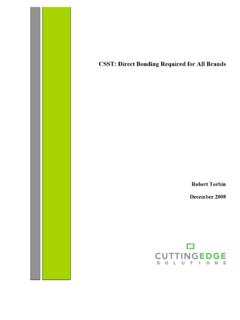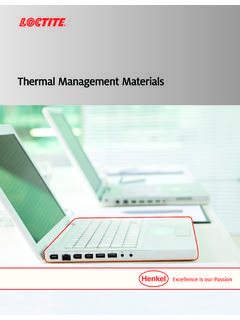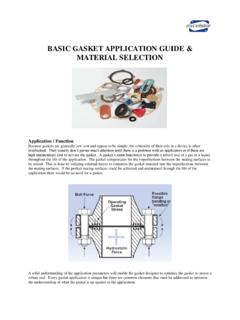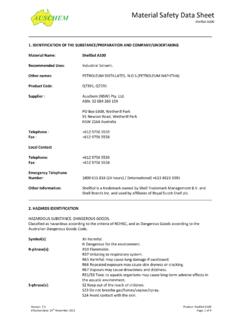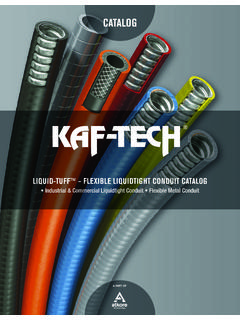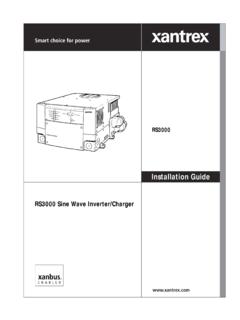Transcription of SAFETY DATA SHEET - plastics.ninja
1 SAFETY data SHEETA ccording to Regulation (EC) No 1907/2006 and 453/2010 (REACH)Trademark:SABIC PPProduct Name:83MF10 - 00900 Product Description:Poly (propylene-ethylene) [CASRN 9010-79-1]Product Type:Commercial ProductRecommended use:May be used to produce molded or extruded articles or as acomponent of other industrial :SABIC SALES Europe or any of its AffiliatesEuropaboulevard 1, 6135 LD Box 5151, 6130 PD SITTARDThe NetherlandsManufacturer:SABIC PolymersGenk, BelgiumGeleen, The NetherlandsWilton, United Kingdomand/orGelsenkirchen, GermanyEmergency Telephone Number:SITTARD +31 (0)46 476 55 55 (0h - date: 29-May-2015 Revision Number: 2 Revision date: 28-May-2015 Product Name: 83MF10-009001. IDENTIFICATION OF THE SUBSTANCE AND COMPANYPage 1 of 8 Revision date: 28-May-2015 Classification of the substance or mixtureREGULATION (EC) No 1272/2008 Not hazardousNot classifiedClassification according to EU Directives 67/548/EEC or 1999/45/ECCLP/GHS-LabelingGHS Labeling not requiredPrecautionary StatementsNo GHS specific Precautionary Statements required - observe all other warnings and handling instructions in this hazards which do not result in classification:2.)
2 HAZARDS IDENTIFICATIONThe additives in this product (if any) are bound in a thermoplastic resin matrix. In accordance with GHS for the classification of theproduct, the hazard potential may be assessed with respect to the physico-chemical form and/or bioavailability of the individualcomponents in the thermoplastic GHS classifications are shown below, these are based on the individual components in the thermoplastic resin the typical use conditions for the resin, these hazardous components are unlikely to contribute to workplace read the entire SAFETY data SHEET and/or consult an EHS professional for a complete Name: 83MF10-00900 Page 2 of 8 Revision date: 28-May-2015 Other Information:Cool skin rapidly with cold water after contact with molten material. Heating can releasehazardous gases. Hazardous fumes can also occur in post-processing operations. Pellets with slight or no odor Spilled material may create slipping hazard Can burn in a fire creating dense, toxic smoke Molten plastic can cause severe thermal burns Fumes produced during melt processing may cause eye, skin, and respiratory tract irritation.
3 Severe over-exposure may result innausea, headache, chills, and fever. See below for additional effects. Secondary operations, such as grinding, sanding, or sawing can produce dust which may present an explosion or Issues:Processing vapors may cause irritation to the eyes, skin, and respiratory tract. In cases ofsevere exposure, nausea and headache can also occur. Grease-like processing vaporcondensates on ventilation ductwork, molds, and other surfaces can cause irritation andinjury to Medical Conditions:MEDICAL RESTRICTIONS: There are no known health effects aggravated by exposure tothis product. However, certain sensitive individuals and individuals with respiratoryimpairments may be affected by exposure to components in the processing Emergency OverviewThe non-hazardous components and exact percentage (concentration) of the composition have been withheld as a trade product consists primarily of high molecular weight polymers which are not expected to be hazardous.
4 The ingredients in thisproduct are present within the polymer matrix and are not expected to be COMPOSITION/INFORMATION ON INGREDIENTS4. FIRST AID MEASURESIf Inhalation:Move to fresh air in case of accidental inhalation of fumes from overheating or combustionIf symptoms persist, call a physicianOn skin contact:Immediately cool the skin by rinsing with cold water after contact with hot material Wash offimmediately with soap and plenty of water Consult a physicianOn contact with eyes:Immediately flush with plenty of water. After initial flushing, remove any contact lenses andcontinue flushing for at least 15 minutes If eye irritation persists, consult a specialistOn ingestion:No hazards which require special first aid measuresPrecautions:Cool molten product on skin with plenty of water. Do not remove solidified product Do notpeel polymer from the skinProduct TypeMixtureProduct Name: 83MF10-00900 Page 3 of 8 Revision date: 28-May-2015 For the full text of the H-phrases, if mentioned in this section, see Section :Not determinedSuitable Extinguishing Media:Use dry chemical, CO2, water spray or "alcohol" foam.
5 Water is the best extinguishingmedium. Carbon dioxide and dry chemical are not generally recommended because theirlack of cooling capacity may permit re-ignition on larger resin fires (blobs, drools, etc.)Unsuitable Extinguishing Mediafor SAFETY Reasons:Do not use a solid water stream as it may scatter and spread fireHazardous DecompositionProducts:Fire will produce dense black smoke containing hazardous combustion products, from CombustionProducts:Fire will produce dense black smoke containing hazardous combustion products, carbonoxides, hydrocarbon Protective Equipmentfor Firefighters:In the event of fire, wear self-contained breathing apparatus (EU: NEN-EN137)Specific Hazards:Take precautionary measures against static discharges During processing, dust may formexplosive mixture in air Thermal decomposition can lead to release of irritating gases andvapors5.
6 FIRE-FIGHTING MEASURES6. ACCIDENTAL RELEASE MEASURESC lean up:Sweep up and shovel into suitable containers for disposal. Do not create a powder cloud byusing a brush or compressed Precautions:See section 8. If spilled, take caution, as material can cause surfaces to become Precautions:Do not flush into surface water or sanitary sewer system. Material should not be releasedinto the Temperature:>300 C7. HANDLING AND STORAGEH andling:Handle in accordance with good industrial hygiene and SAFETY practices. Provide forappropriate exhaust ventilation and dust collection at machinery. Minimize dust generationand accumulation. Routine housekeeping should be instituted to ensure that dusts do notaccumulate on surfaces. Dry powders can build static electricity charges when subjected tothe friction of transfer and mixing operations. Provide adequate precautions, such aselectrical grounding and bonding, or inert :Store in a dry and cool area.
7 Keep away from heat sources and sources of ignition. Keepaway from direct LimitsProduct Name: 83MF10-00900upper:Page 4 of 8 Not determinedRevision date: 28-May-2015 Engineering MeasurestoExposure:In the case of hazardous fumes, wear self-contained breathing apparatus. Wear face-shieldand protective suit for abnormal processing problems. Handle in accordance with goodindustrial hygiene and SAFETY practice. Provide for appropriate exhaust ventilation Protection:Protective gloves should be worn. (EU: NEN-EN 374). When handling hot material, wearheat-resistant protective gloves that are able to withstand the temperature of molton Protection: SAFETY glasses with side-shields. (EU: NEN-EN 165-166).Respiratory Protection:In the case of hazardous fumes, wear self contained breathing apparatus. In case ofinsufficient ventilation wear suitable respiratory equipment.
8 (EU: NEN-EN149).Body Protection:Long sleeved clothing. (EU: NEN-EN 340-369-465).Hygiene Measures:When using, do not eat, drink or EXPOSURE CONTROLS / PERSONAL PROTECTION9. PHYSICAL AND CHEMICAL PROPERTIESP hysical State:SolidAppearance:PelletsColor:Same as color codeOdor:CharacteristicBoiling point/range:decomposition starting from 300 CMelting point/range:140-170 C (284-338 F)Autoignition Temperature:>300 CVOC content (%):NegligibleExposure limits:No components with information, unless noted belowProduct Name: 83MF10-00900 Page 5 of 8 Revision date: 28-May-2015*SABIC Recommended Exposure Limits have been established for certain :Not determinedVapor Pressure:Water Solubility: g/cm Explosive LimitsEvaporation Rate:Negligibleupper:Not determined11. TOXICOLOGICAL INFORMATIONLD50/oral/rat:>5000 mg/kgLD50/dermal/rabbit:>2000 mg/kgSubchronic Toxicity:No information availablePrimary Irritation:Substance does not generally irritate and is only mildly irritating to the skinRemarks:The toxicological data has been taken from products of similar compositionSpecial Studies:No InformationStability:Stable under ambient conditions.
9 Hazardous polymerization does not ECOLOGICAL INFORMATIONE cotoxicity Effects:Ecological damages are not known or expected under normaluse. Small particles can have an effect on water and to Avoid:13. DISPOSAL CONSIDERATIONSW aste from residues / unusedproducts:Where possible recycling is preferred to disposal or incineration. Dispose of in accordancewith local Packaging:Empty containers should be transported/delivered using a registered waste carrier for localrecycling or waste waste disposal no:702 - waste from the manufacture, formulation, supply and use of plastics, synthetic rubberand man-made temperatures above 300 C. Heating can result in the formation of gaseousdecomposition products, some of which may be hazardous. Do not exceed melttemperature recommendations in product literature. Purgings of hot material should becollected in small, flat, thin shapes and quenched with water to allow for rapid cooling.
10 Donot allow product to remain in barrel at elevated temperatures for extended periods of DecompositionProducts:Process vapors under recommended processing conditions may include trace levels ofhydrocarbons, carbon Name: 83MF10-00900 Page 6 of 8 Revision date: 28-May-201510. STABILITY AND REACTIVITYADR/RID/ADN IMDG ICAO IATA-DGR 14. TRANSPORT INFORMATION15. REGULATORY INFORMATIONF urther regulatory information can be requested via your local sales Inventories: TSCA (USA):ListedDSL (Canada):ListedENCS (Japan):ListedIECSC (China):ListedKECL (Korea):ListedPICCS (Philippines):ListedAICS (Australia):ListedNZIoC (New Zealand):ListedREACH Information:For this product's REACH related information, please contact Inventory Information:A "Listed" entry above means all chemical components are on the respective inventory list and/or a qualifying exemption exists forone or more components.
